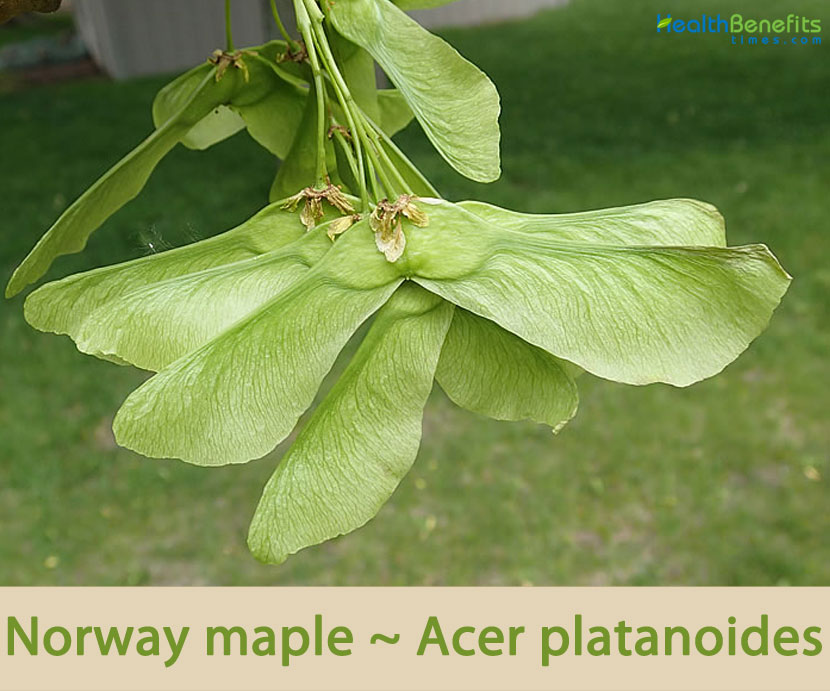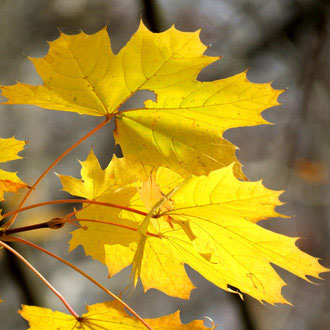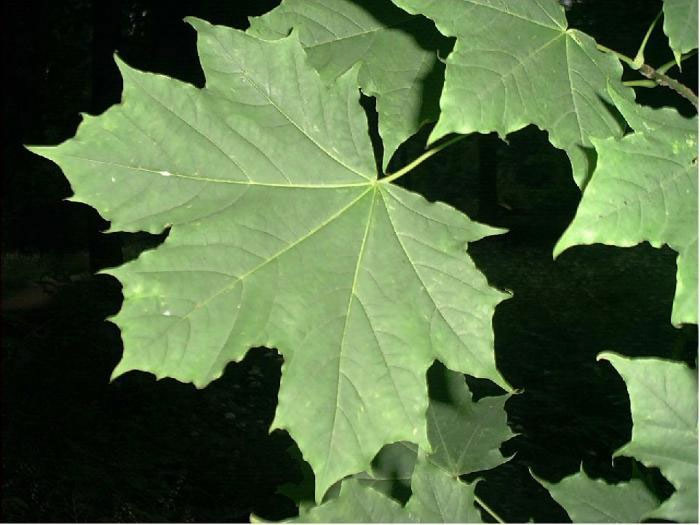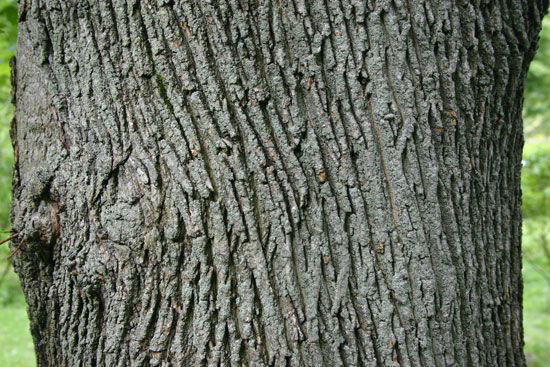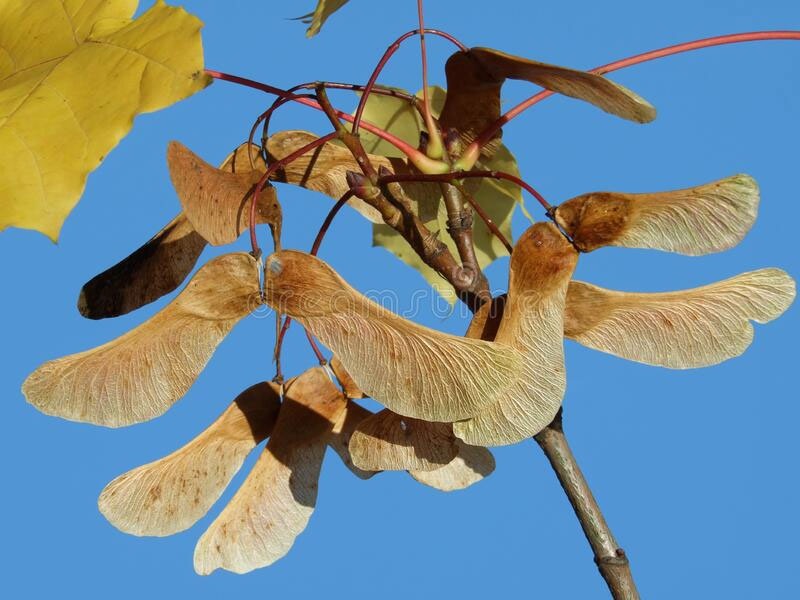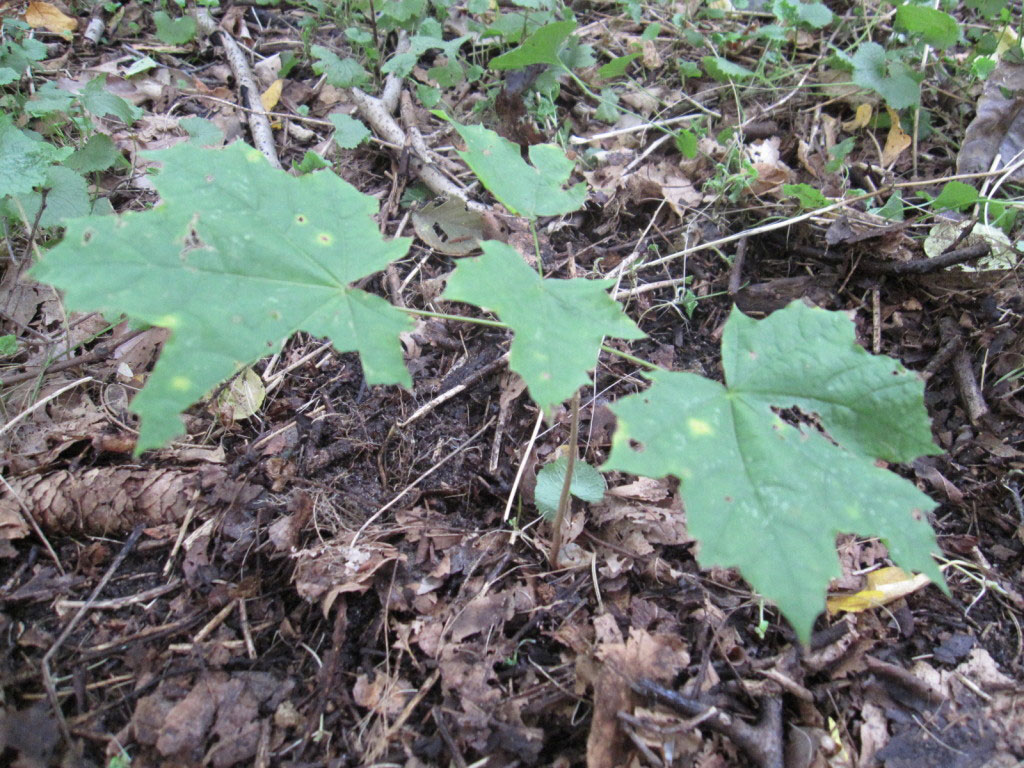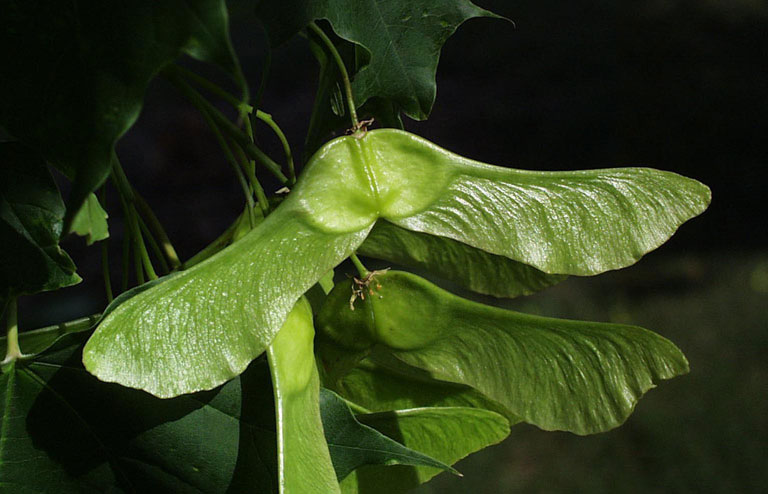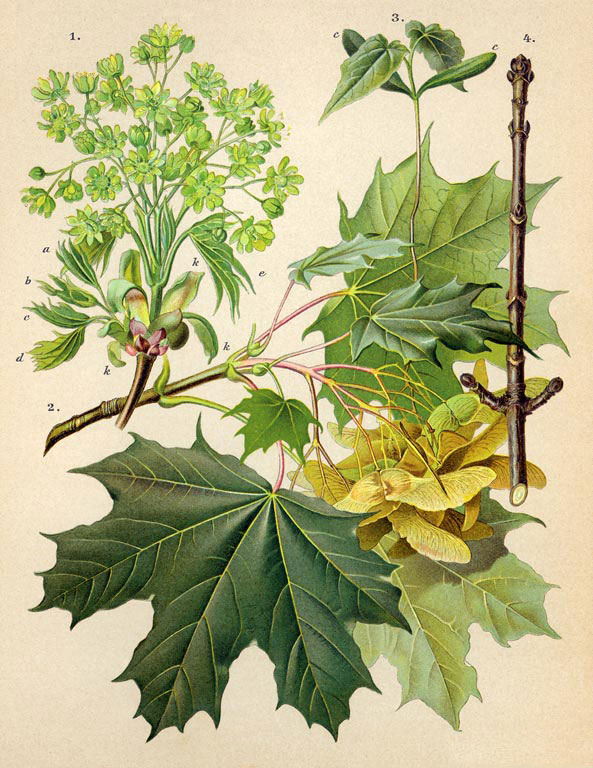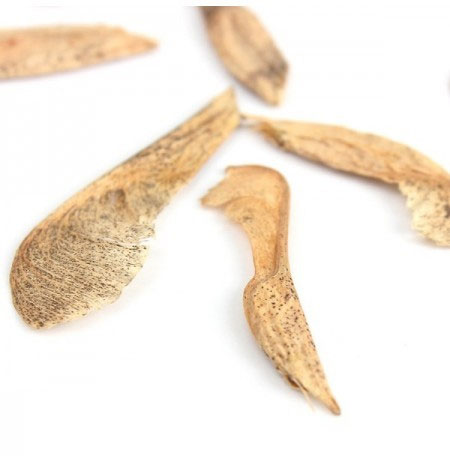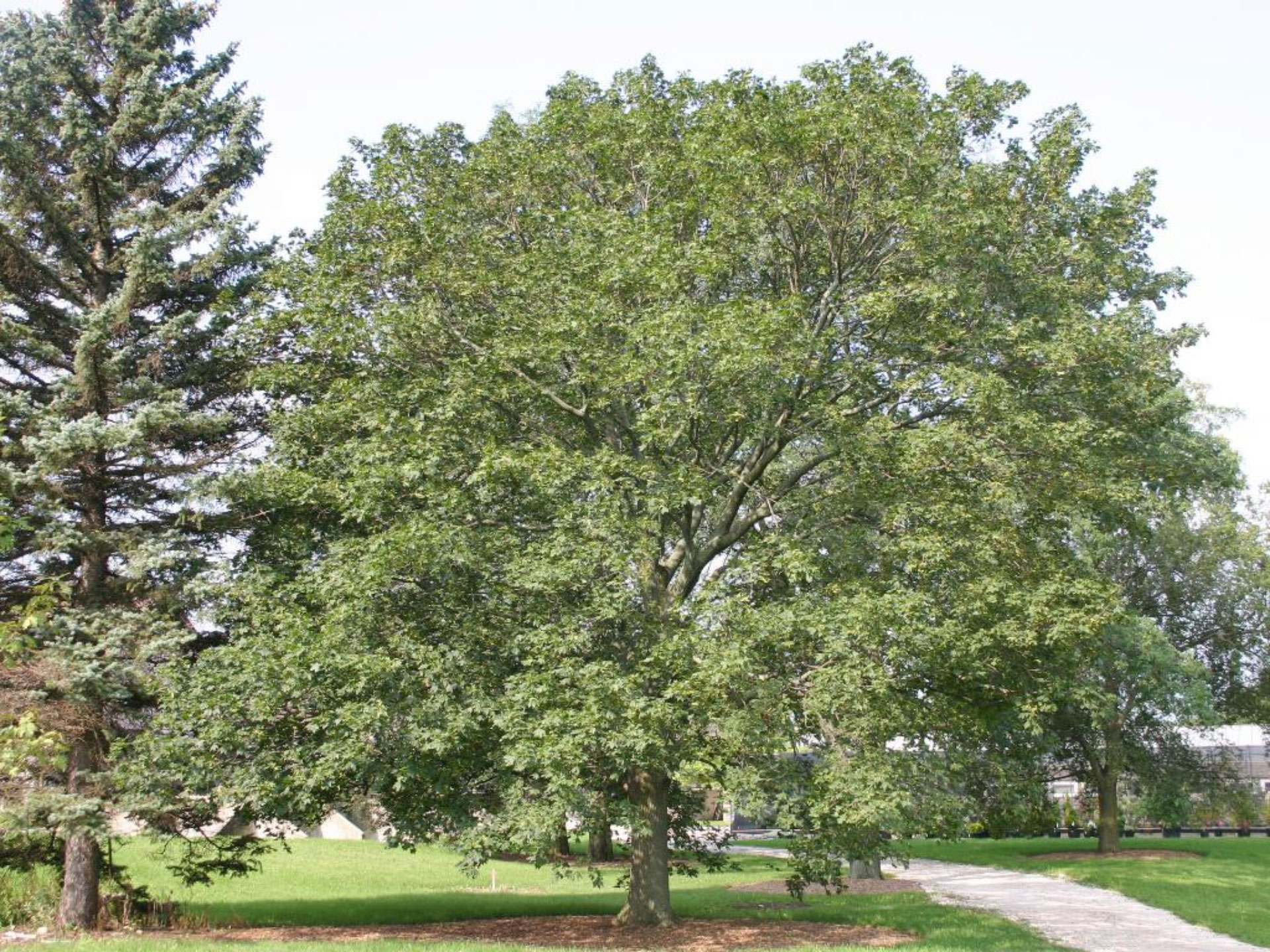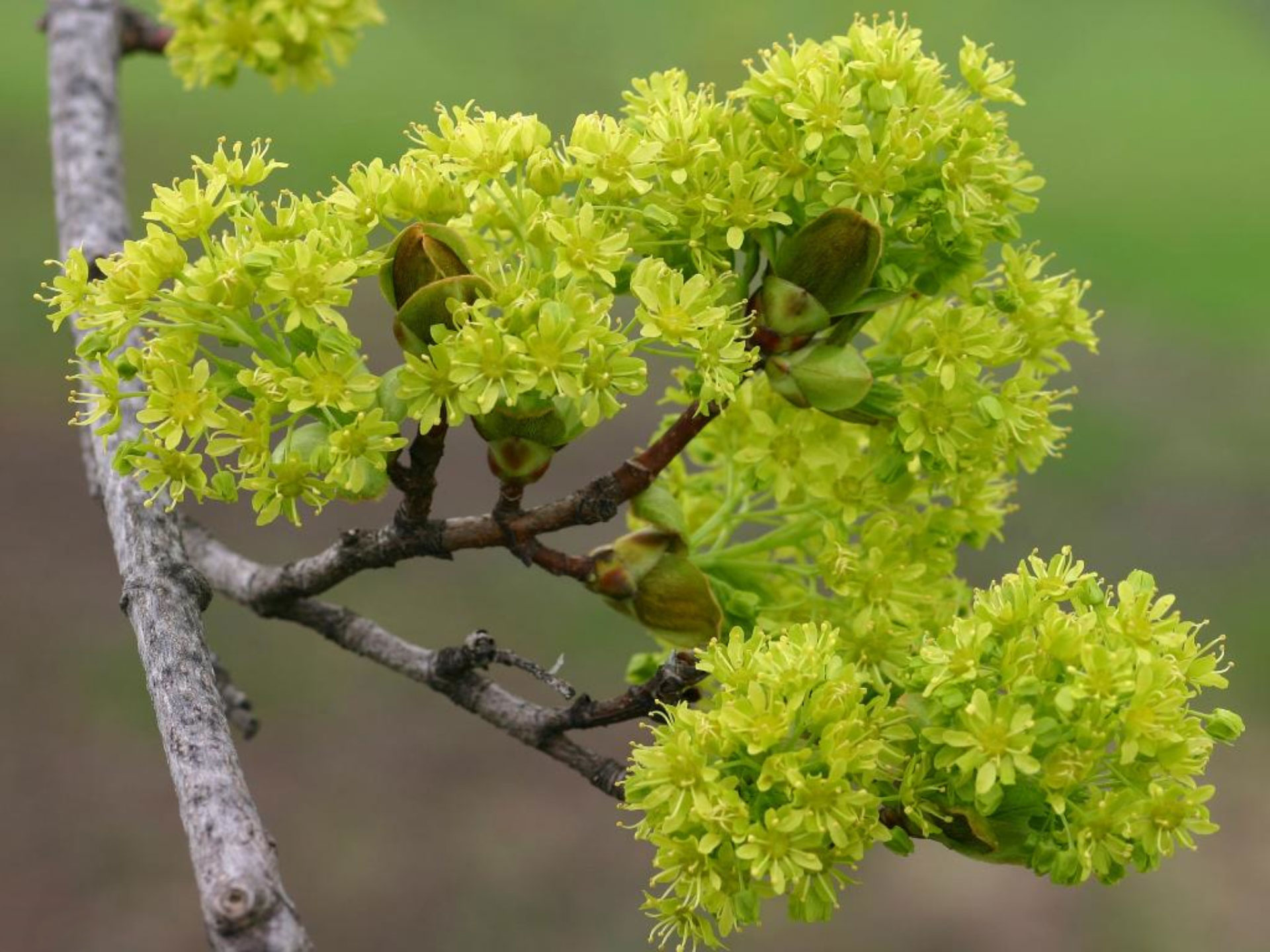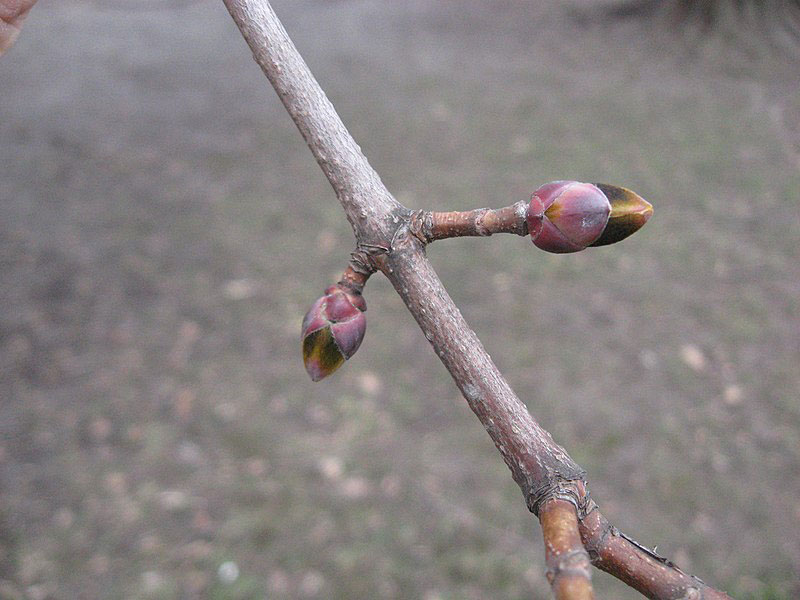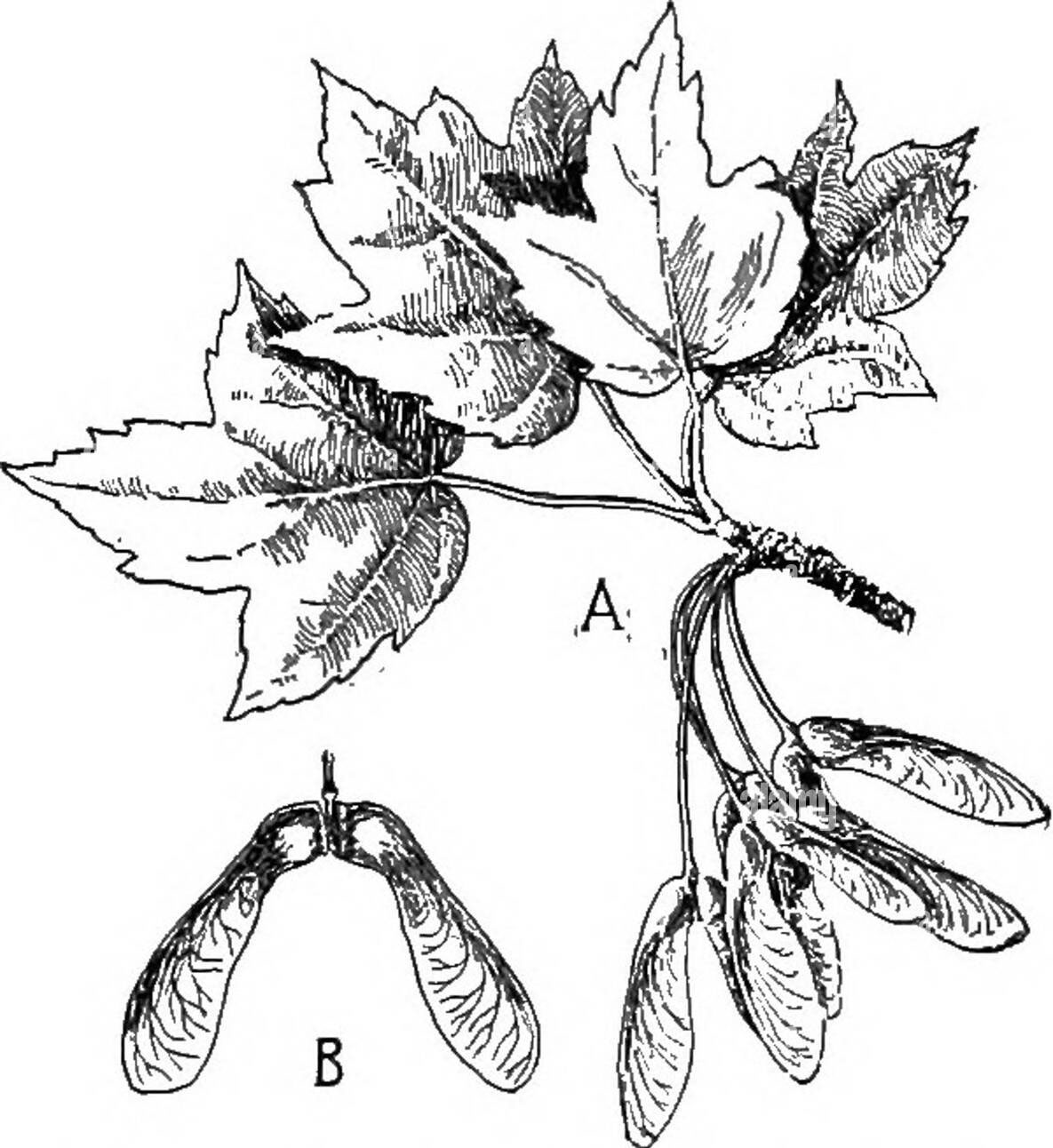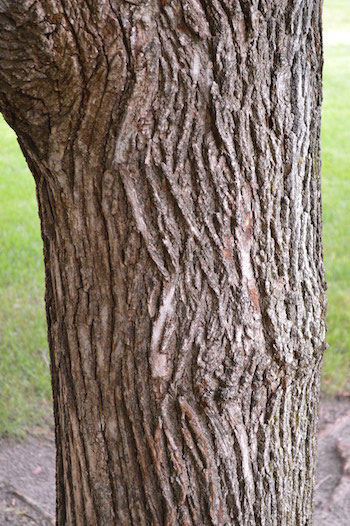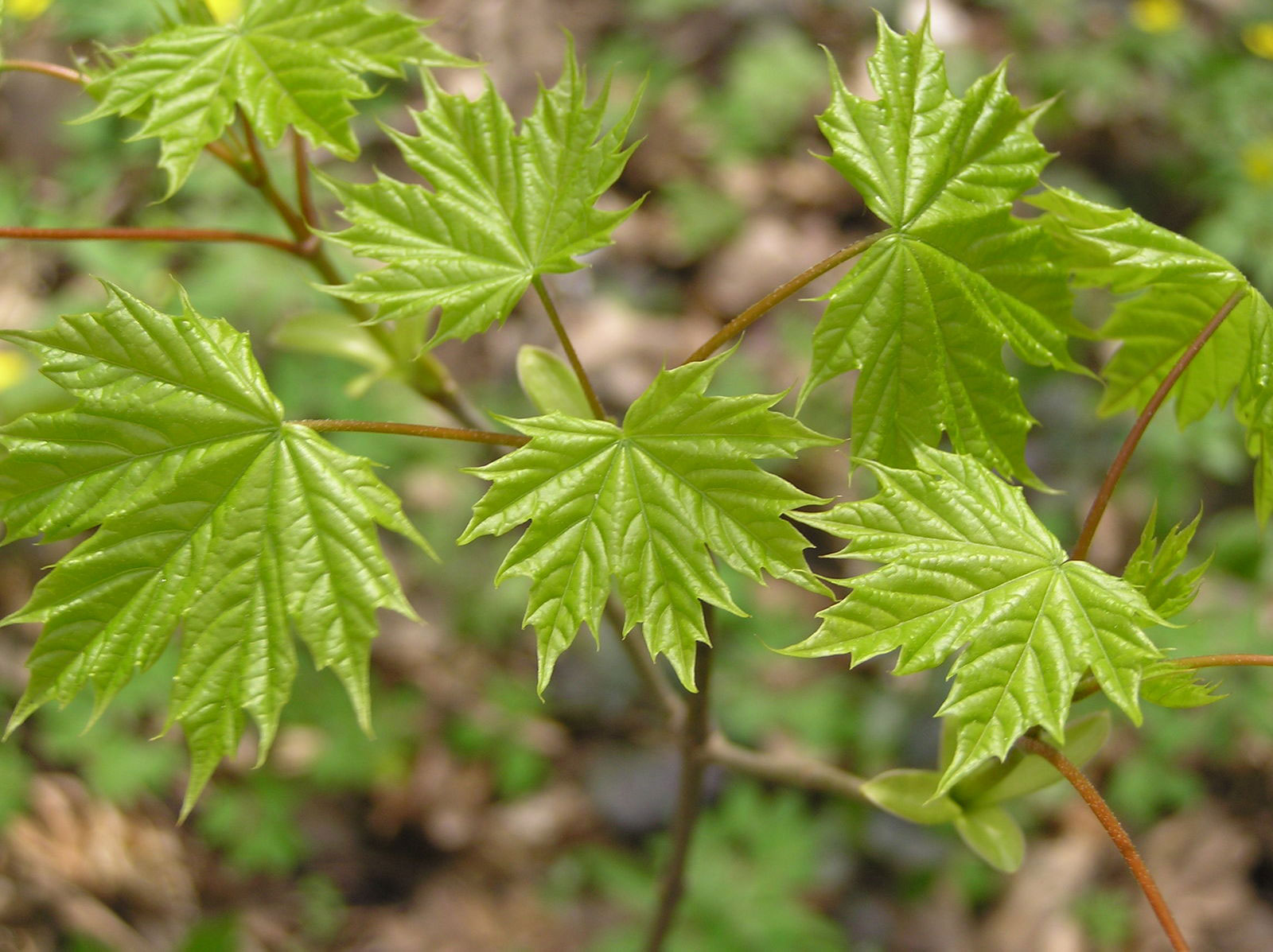| Norway maple Quick Facts | |
|---|---|
| Name: | Norway maple |
| Scientific Name: | Acer platanoides |
| Origin | Continental Europe and western Asia |
| Colors | Initially green turning to brown as they mature |
| Shapes | Pair of winged keys or samaras; each key is 3.5 – 5.5 cm long. |
| Taste | Astringent and slightly bitter taste (Bark) |
| Name | Norway maple |
|---|---|
| Scientific Name | Acer platanoides |
| Native | Continental Europe and western Asia. It occurs naturally from central France in the east into central Asia Minor and northern Iran in the west, and from southern Norway and Sweden to northern Spain, Italy, and the Balkans. It is the most widely distributed maple in Europe |
| Common Names | Norway Maple, Harlequin Maple, Plane, Norway Maple variety, plane maple |
| Name in Other Languages | Afrikaans: Noorse esdoring Albanian: Panjë Arabic: Shanar, qiqib dilabiy (قيقب دلبي) Aragonese: Aciron, arce real Armenian: T’khki sraterev (թխկի սրատերև) Azerbaijani: Sivriyarpaq ağcaqayın Basque: Astigar zorrotz Belarusian: Klion vastralisty (Клён вастралісты) Bulgarian: Shestil (шестил), mlechen yavor (млечен явор) Catalan: Erable, plàtan fals Chinese: Nuówēi fēng (挪威枫) Croatian: Javor mliječ Czech: Javor mléč, mléč Danish: Spidsløn , Spids-Løn, Spidsbladet løn Dutch: Noorse esdoorn, Plataan esdoorn, gewone esdoorn English: Norway maple, Plane, Norway Maple variety, plane maple Estonian: Harilik vaher Finnish: Metsävaahtera, Vaahtera French: Érable plane, Érable platane, Faux sycamore, Érable de Norvège, Érable platanoïde, faux érable, iseron, main découpée, plaine, plane, érable blanc Galician: Pradairo real Georgian: Lek’a (ლეკა) German: Norwegischer Ahorn, Spitzahorn, Spitz-Ahorn, europaeischer Spitzahorn; Leinbaum; Spitzahorn; spitzblättriger Ahorn, europäischer Spitzahorn, Fladerbaum, Leinahorn, Lenne Greek: Sfendámi platanoeidés (Σφενδάμι πλατανοειδές ) Hebrew: אדר נורווגיה Hungarian: Korai juhar Icelandic: Broddhlynur Iran: Karkaf Italian: Acero riccio, Acero platanoide, acero platano, amillacero, falso sicomoro, oppio riccio Japanese: Noruwee kaede (ノルウェーカエデ) Kashubian: Zwëczajny klón Lithuanian: Paprastasis klevas Latvian: Parastä klava, platanu kļava Macedonian: Mleč (млеч) Meadow Mari: Tıglay vaştar (Тыглай ваштар) Netherlands: Europese esdoorn, Noorse esdoorn Northern Frisian: Spasahorn Northern Sami: Váđir, Lievdnja Norwegian: Spisslønn, Løn Occitan: Pladu, plainé, plàume Persian: افرای نروژی Polish: Klon pospolity, Klon zwyczajny, klon pospolitz Portuguese: Platano bastardo , Sicômoro-bastardo, Sicômoro-falso, Bordo-da-noruega, Ácer-da-noruega Romanian: Arţar, paltin de câmp Romansh: Ischi giz Russian: Klen ostrolistnyj (Клен остролистный), Klen platanovidnyj (Клен платановидный), Klen platanolistnyj (Клен платанолистный) Serbian: Mlec (Млеч) Slovak: Javor mliečny Slovenian: Ostrolistni javor Spanish: Arce aplatanado , Arce real, Ostrolistni javor, arce noruego, arce platanoides, acirón Swedish: Skogslönn, (Metsä)vaahtera, Lönn, Løn Turkish: Çınar yapraklı akçaağaç, Sivri akçaağaç, çınar akçaağacı Ukrainian: Klen zvychaynyy (Клен звичайний), klen hostrolystyy (клен гостролистий) Upper Sorbian: Kónčkaty klon Vietnamese: Phong Na Uy Walloon: Plaene Welsh: Masarn Norwy, Masarnen Norwy |
| Plant Growth Habit | Medium- to large-sized fast-growing, deciduous tree |
| Growing Climates | Common in parks, large gardens, town suburbs, in shelterbelts, near chalk lands, colonized hedgerows, thickets, woods, successional forest, forest wetland, along roadsides, wasteland, disturbed ground, nearby woodlots, forest edges and fragmented forests |
| Soil | Grows best on moist, adequately drained, deep, fertile soils. It is intolerant of low soil nitrogen conditions and is rare on acidic (pH near 4) soils |
| Plant Size | Grows to 40-60 ft. (12-18 m) in height, but can reach heights of 100 ft. (30 m). |
| Root | Shallow and roots are typically visible at the soil line |
| Crown | Tall-domed, sometimes very broad on a short stem; open in winter with rather short perpendicular shoots and often thin bunches of persistent fruits, and with very dense foliage in summer |
| Bark | Bark of young trees is smooth and grey-brown; on older trees the bark becomes darker and shallowly furrowed with long narrow ridges in a network. |
| Wood | Dark reddish-brown |
| Stem | Straight cylindrical stem and erect, glabrous, green to brown branches |
| Shoot | Pinkish-brown or olive-brown, buds ovoid; terminals dark red or red-brown, laterals green appressed |
| Branchlets | Glabrous, purplish-red or greenish, turning darker and woody by the end of the first year |
| Buds | Ovoid, with 5 to 8 pairs of imbricate scales. |
| Leaf | Simple and oppositely arranged with five to seven palmate lobes. Lobes and teeth are sharply pointed. The upper surface of the leaf is dark green, and the undersurface is lustrous green and smooth, except for occasional tufts of hairs in vein angles |
| Flowering season | Mid April – May |
| Flower | Small male and female flowers may be on separate trees or the same tree. For both, the flowers open broadly, are 10 mm across, greenish yellow with 5 oval-lance sepals up to 1/8 inch long and 5 spatula shaped petals nearly twice as long as the sepals |
| Fruit Shape & Size | Pair of winged keys or samaras; each key is 3.5 – 5.5 cm long. |
| Fruit Color | Initially green turning to brown as they mature |
| Taste | Astringent and slightly bitter taste (Bark) |
| Plant Parts Used | Whole plant and Wood |
| Propagation | By seed and by grafting |
| Lifespan | About 150 years |
| Season | Mid May (immature) – October (mature) |
Plant Description
Norway maple is a medium- to large-sized fast-growing, deciduous tree that normally grows to 40-60 ft. (12-18 m) in height, but can reach heights of 100 ft. (30 m), with a trunk up to 1.5 m (5 ft.) in diameter and can live to 150 years. The plant has straight trunk, widely spreading symmetrical crown and rounded appearance. The plant is common in parks, large gardens, and town suburbs, in shelterbelts, near chalk lands, colonized hedgerows, thickets, woods, successional forest, and forest wetland, along roadsides, wasteland, and disturbed ground, nearby woodlots, forest edges and fragmented forests. The plant grows best on moist, adequately drained, deep, fertile soils. It is intolerant of low soil nitrogen conditions and is rare on acidic (pH near 4) soils. It makes suboptimum growth on sandy soils or soils high in lime or clay content, and does not tolerate high evapotranspiration or prolonged drought.
Stem and Bark
Twigs are stout, smooth, and hairless. Branch tips are often forked the result of a terminal flower cluster and opposite arrangement. The shoots are green at first, soon becoming pale brown. The winter buds are shiny red-brown. The terminal bud is purplish-green or reddish-purple, plump, and blunt with three to four pairs of fleshy scales. Young bark is grey and smooth, with ridges beginning to develop as the tree matures. Older bark is dark grey with regular shallow intersecting ridges (crisscrossing pattern, furrowed) and not scaly.
Leaves
Leaves are simple and oppositely arranged with five to seven palmate lobes. Lobes and teeth are sharply pointed. The upper surface of the leaf is dark green, and the undersurface is lustrous green and smooth, except for occasional tufts of hairs in vein angles. The leaves are slightly wider and are 7–14 cm long and 8–25 cm wide. The leaf petiole is 8–20 cm long. The leaf petiole, bud scales, and twigs exude a milky white sap when broken, which can be used to easily distinguish it from most other maple species. This milky sap is best seen at the base of a broken petiole. The normal green form turns a showy yellow in the fall, often as one of the very last trees to turn color in the season.
| Leaf arrangement | Opposite/sub opposite |
| Leaf type | Simple |
| Leaf margin | Lobed, dentate, incised |
| Leaf shape | Star-shaped |
| Leaf venation | Palmate |
| Leaf type and persistence | Deciduous |
| Leaf blade length | 4 to 8 inches |
| Leaf color | Green |
| Fall color | Yellow |
| Fall characteristic | Showy |
Flower
Round, branching, upright clusters about 2 inches across appear just prior to or at the same time leaves emerge in spring. Small male and female flowers may be on separate trees or the same tree. For both, the flowers open broadly, are 10 mm across, greenish yellow with 5 oval-lance sepals up to 1/8 inch long and 5 spatula shaped petals nearly twice as long as the sepals. In the center is a brownish green disk. Male flowers have 8 spreading stamens around the disk, females a 2-part, curled style in the center. Flower stalks are long, slender and hairless or glandular-hairy. Flowering normally takes place in between Mid-April and May. The flowers are not known to self-pollinate (self-incompatible).
| Flower color | Green |
| Flower characteristics | Not showy |
Fruits
Fertile flowers are followed by a pair of winged keys or samaras; each key is 3.5 – 5.5 cm long. They are initially green turning to brown as they mature. The winged samaras ripen in the fall (September and October) and are dispersed by wind and occasionally water. Both halves of the seed usually contain fertile seeds. The seeds are disc-shaped, strongly flattened, 10–15 mm across and 3 mm thick. The wings are 3–5 cm long, widely spread, approaching a 180° angle. It typically produces a large quantity of viable seeds.
| Fruit shape | Elongated |
| Fruit length | 1 to 3 inches |
| Fruit covering | Dry or hard |
| Fruit color | Brown, green |
| Fruit characteristics | Attracts birds; showy; fruit/leaves not a litter problem |
Culinary Uses
- Sap consists of a certain amount of sugar and can either be used as a drink, or can be concentrated into syrup by boiling off the water.
- The syrup is used as a sweetener on many foods.
Other Facts
- Leaves are packed around apples, root crops etc. to help preserve them.
- Trees are fairly wind tolerant and are often used in to give protection from the wind in mixed shelterbelts.
- They are fast-growing and rapidly produce a screen.
- Rose coloured dye is obtained from the bark.
- Wood is hard, heavy, and fine grained and used for small domestic items.
- Norway maple wood has been used for making musical instruments, furniture, marquetry, tool handles and turned objects.
- In urban environments, the shallow roots of Norway maple can destroy infrastructure such as pavement, requiring ongoing repairs.
Prevention and Control
Due to the variable regulations around (de)registration of pesticides, your national list of registered pesticides or relevant authority should be consulted to determine which products are legally allowed for use in your country when considering chemical control. Pesticides should always be used in a lawful manner, consistent with the product’s label.
Cultural Control
Munger (2003) discusses the potential effects of fire on this species, noting that while a fire that removed all seed sources would be thought to reduce or remove the species, there is concern that a disturbance event of this type could lead to higher seedling recruitment and resprouting. Use of fire may also be an inappropriate management tool where A. platanoides grows in association with native assemblages that are not fire tolerant.
Mechanical Control
Digging up or other manual removal is suitable for A. platanoides seedlings and saplings as long as the roots are completely removed, or adult trees felled close to ground level. Girdling, by removing the bark and phloem layer from 10 cm around the trunk is also suggested. Removal of trees/saplings reduced subsequent A. platanoides recruitment and enhanced native A. saccharum regeneration, whereas removal of seedlings encouraged new A. platanoides seedlings to emerge; this is attributed to the soil disturbance associated with the pulling of seedlings. An additional cause for concern was that other invasive alien species colonized areas where A. platanoides trees and saplings had been removed.
Chemical Control
Weber (2003) recommends that stumps be treated with herbicide after trees are felled. Combinations of cutting and herbicide in association with monitoring to determine when the treatment should be repeated are recommended by Royal Botanic Garden Canada (2003). Rhoads and Block (2002) propose pasting a triclopyr-oil mixture to the bark of saplings up to 10 cm in diameter at the base of the stem.
Biological Control
Webb et al. (2001) comment on the potential difficulty of locating a suitable biological control agent for A. platanoides because of the need to ensure that the closely related native species, e.g. the sugar maple A. saccharum, with which A. platanoides often grows, would not be affected by such an agent.
References:
http://www.theplantlist.org/tpl1.1/record/kew-2616254
https://www.itis.gov/servlet/SingleRpt/SingleRpt?search_topic=TSN&search_value=28755#null
https://npgsweb.ars-grin.gov/gringlobal/taxon/taxonomydetail?id=1209
https://pfaf.org/user/Plant.aspx?LatinName=Acer+platanoides
https://www.cabi.org/isc/datasheet/2883
https://gd.eppo.int/taxon/ACRPL
https://en.wikipedia.org/wiki/Acer_platanoides
http://www.columbia.edu/itc/cerc/danoff-burg/invasion_bio/inv_spp_summ/Acer_platanoides.html
http://www.iucngisd.org/gisd/species.php?sc=979
https://edis.ifas.ufl.edu/publication/ST039
https://plants.usda.gov/home/plantProfile?symbol=ACPL


